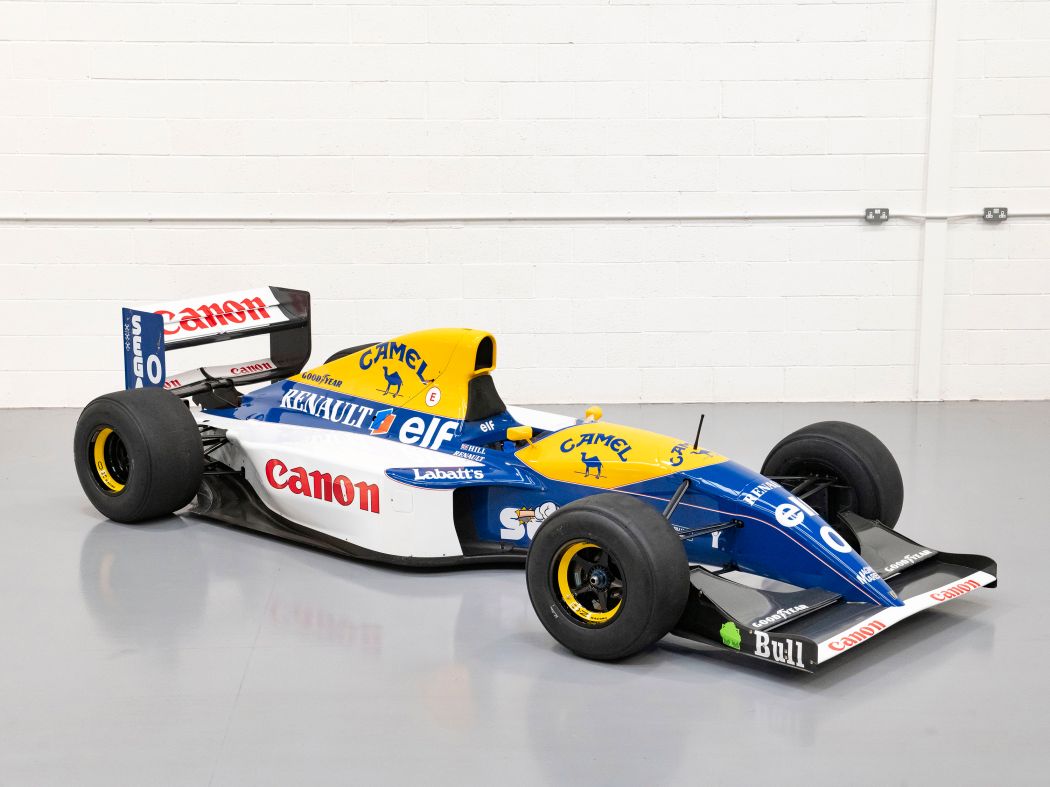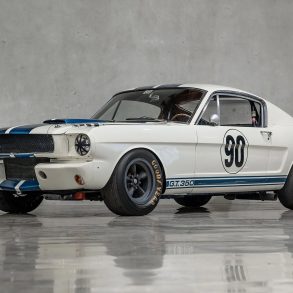Joining the world’s most unique and rare classic cars at the Concours of Elegance this September will be the fastest breed of racing cars. A selection of Formula One cars will celebrate the F1 Championship’s 70th year at Hampton Court Palace for the first time in the concours history.
In 1950, the first F1 World Championship race was the British Grand Prix at Silverstone. Honouring that sporting milestone will be a special a line-up of Formula One cars that every enthusiast will recognise: Ferrari, Williams and Lotus machines inextricably linked with racing heroes such as Sir Stirling Moss and Damon Hill.
Concours of Elegance Managing Director, Andrew Evans, said: “Ever since that first Formula 1 race for the inaugural World Drivers’ Championship 70 years ago the sport has had millions of us around the world on the edge of our seats. It is a great thrill for the Concours of Elegance to display some of these incredible machines in such an important year for Formula One. Historic racers presented in such historic surroundings are sure to make unforgettable memories for every fan of the sport.”
Along with the Formula One display, the 2020 Concours of Elegance will include many other beautiful cars such as unique coachbuilt Alfa Romeos, priceless pre-war Rolls-Royces, and the McLaren F1 GTRs that finished 1st, 3rd, 4th, 5th and 13th at Le Mans 24 Hours 25 years ago.
1993 Williams FW15C, chassis 02 on Display at Concours of Elegance
The FW-15C was an improvement of the Williams FW-14B which won the 1992 Drivers Championship for Nigel Mansell and the 1992 constructors championship for Williams. It was the cream of the crop of F1 cars at the time. Its success of the FW-15C was a grand improvement on the FW-14B.

The FW-15C was designed by Patrick Head and Adrian Newey as a totally new car. Patrick Head had been involved in the design for Williams for the past few years and brought a wealth of knowledge concerning the Williams team and the design of Williams cars while Adrian Newey brought a lot of aerodynamic know-how. This aerodynamic improvements made the FW-15C a significantly better when compared to his predecessor and also improved the design over the FW-14B.
The FW-15C had better aerodynamic downforce and drag of up to 12% and a 30% increase in horsepower when compared to the FW-14B.
The engine powering the FW-15C was a Renault V10 the “RS5 67° V10” which produced 760 BHP. The engine was more powerful than the competition to the tune of about 80 horsepower. The Renault engines of the time had a reputation for bulletproof reliability and as a result, Williams only suffered three failures during races throughout the 1993 season and each of those failures had the second driver on the team win the race.
The transmission of the FW-15C was a semi-automatic transmission that had and hydraulic activation system. The transmission could switch to a fully automatic transmission at any point in time during the race simply by the driver pressing an “auto-up” button. Yet, the driver could easily take control of the gear simply by using the levers.
The electricals of the FW-15C was a very technical arena. The car had all types and kinds of driver aids in it like anti-lock brake system, active suspension, traction control, telemetry, fly-by-wire control, pneumatic engine valve Springs, power steering, semi-automatic transmission and a fully automatic transmission. The enhancements were so much that Alain Prost, the number one driver for Williams in 1993, called it a little Airbus.
It also featured a complicated push-to-pass system that allows for easy overtakes by the push of a button similar to Porshe new system used in their 911 Carrera Turbo S.
Several of these drivers aids were banned by the FIA following the British Grand Prix in 1993 leading to the “Weckerschoff protocol”. The ban took effect from the start of the 1994 season.
The FW-15C went on to be the best car on the grid for the 1993 season as it was ahead of the pack compared with other competitor. Alain Prost went on to win his fourth Drivers Championship in the FW-15C and Williams second driver Damon Hill was not so far behind in third place split only by the legendary Ayrton Senna.
1967 Ferrari 312/67, chassis 0007 on Display
The Ferrari 312 was born in an era of Formula one racing cars before big wings and aerofoils dominated the stage. It was used extensively by Ferrari from 1966 to 1969 in Formula 1, with the naming nomenclature (312) that designated a 3-litre naturally-aspirated V12 sports car.

The Ferrari 312 was designed extensively by Mauro Forghieri and was the successor to the 246 F1-66 motor used earlier by Ferrari in the competition. It sported an aluminium monocoque chassis, that is, the frame and body were built together as just one structure.
The V12 engine was in 3.3litres naturally aspirated mid-mounted engine placed directly behind the driver and mated to a 5-speed manual transmission longitudinally.
The suspension structure at the front of the vehicle was a double-wishbone system with inboard springs and dampers. However, at the rear, it had twin trailing links, upper lateral link and lower reversed A-arms.
The 312 was only able to attain the highest position of second place in the constructors’ championship in its debut year. This was the highest it attained throughout his three-year stint in the Formula 1 as it came 5th and 4th ended successive years consecutively.
The last 312/67 to be made, being the chassis number 0007, had its first race at the Italian Grand Prix 53 years. It went on to have another six Grand Prix starts before joining the famous Pierre Bardinon collection of racing Ferraris.
1961 Lotus 18-21, chassis 916
Lotus 18 was the first mid-engined car built by Lotus that was introduced for the 1960 F1, F2 and FJ seasons.
Before the 21 could take over from the 18 a stop-gap model was needed – and that car was the 18-21.

The 1961 Lotus 18-21 took the 18’s rear-engined layout and triangulated tube-frame chassis, clothed it with the 21’s lower and more aerodynamic body, and fitted it with upgraded rear suspension and a new type of Hewland gearbox.
The result paid off, with Innes Ireland giving Lotus its first works F1, while chassis 916 taking victory in the Danish and South African GPs that year with Stirling Moss driving.
More information about the Grand Prix racing line up at Concours of Elegance can be found at their website.










